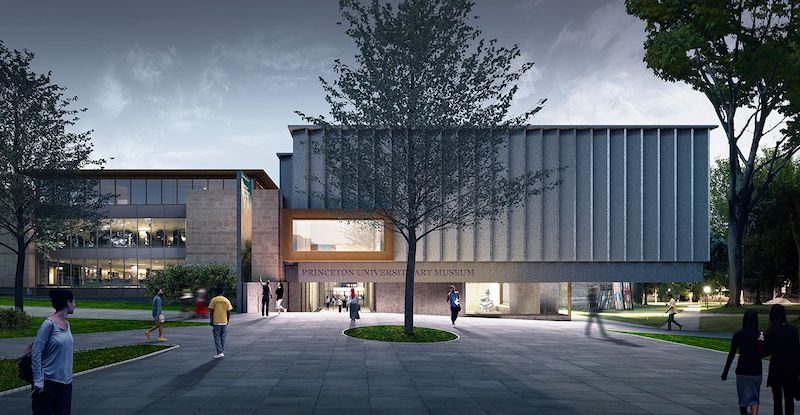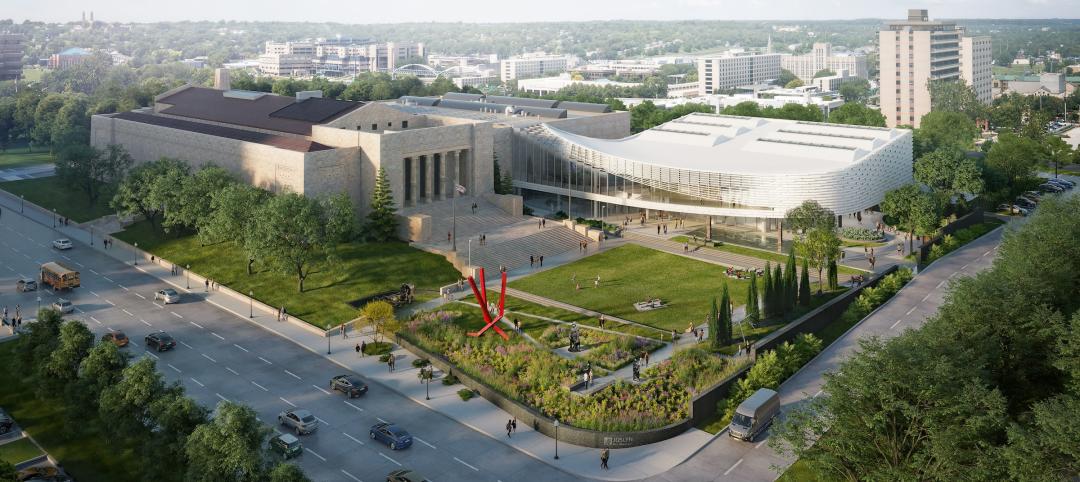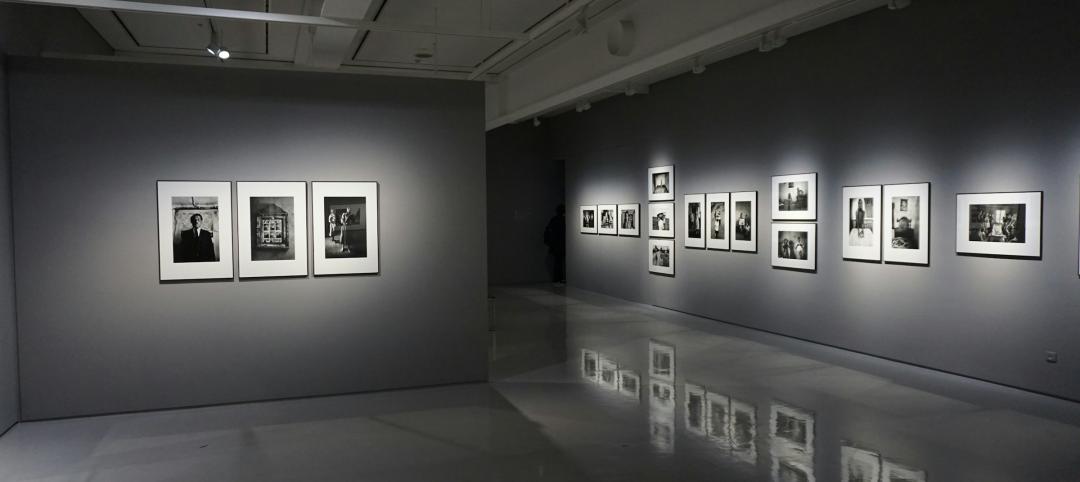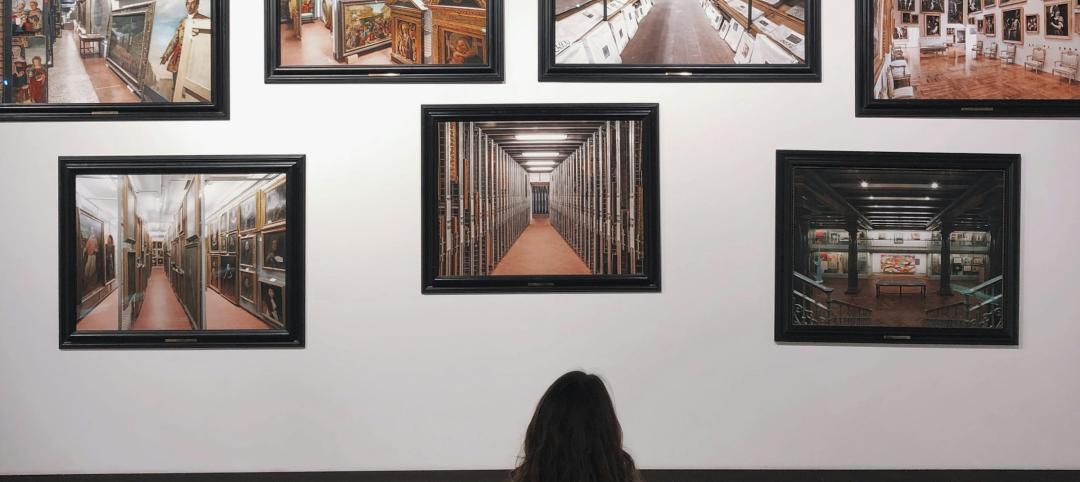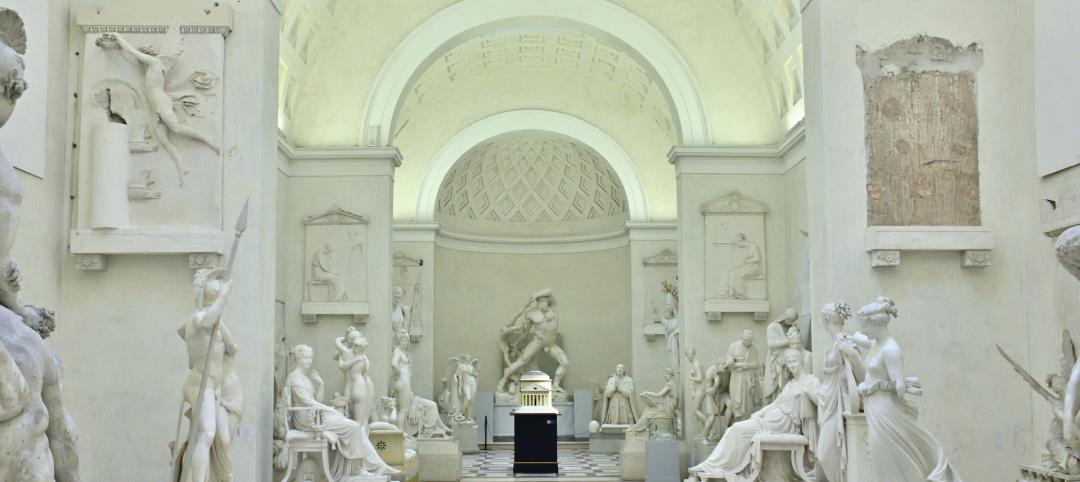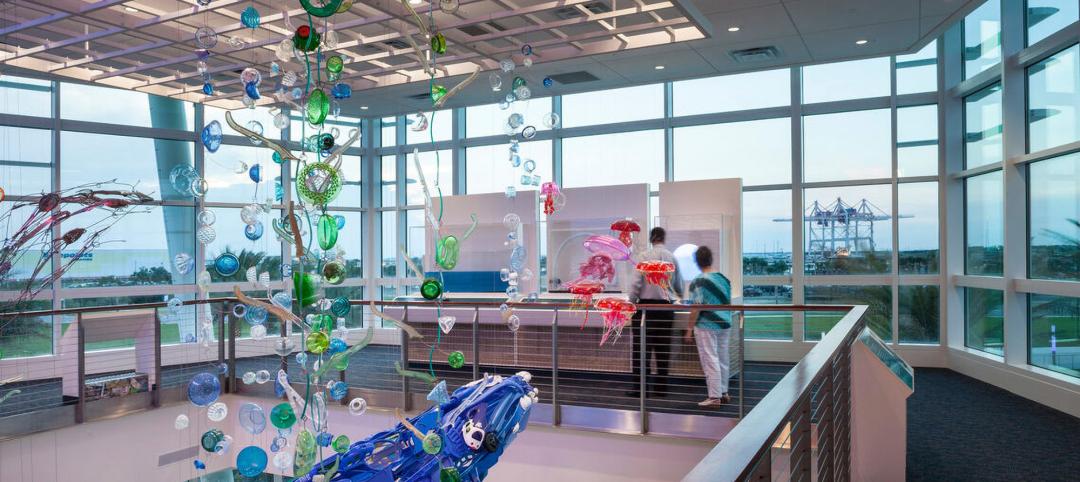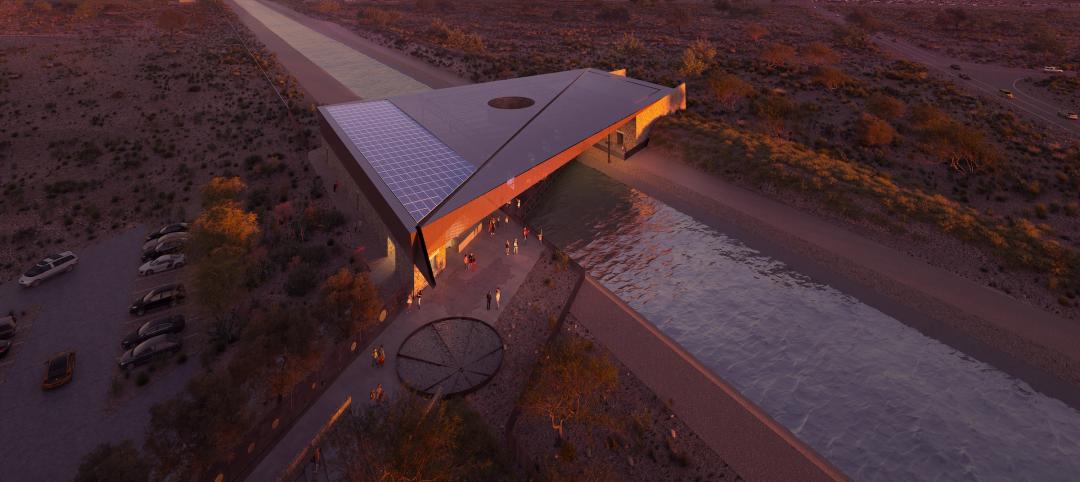One of the jewels in New Jersey’s cultural crown is Princeton University’s Art Museum, which was established in 1882, and whose present collection exceeds 110,000 objects. The museum is known for its Greek and Roman antiquities and Western European paintings. It also has a noteworthy collection of Asian art, as well as an extensive photography array.
But like most other institutions, Princeton’s museum only has enough space to exhibit a tiny fraction of its collection. Last month, the Art Museum unveiled the designs for a new 144,000-sf museum that would double the size of the existing building. James Steward, the museum’s director, estimates that the percentage of objects on view from permanent collections would triple to 6% in the new building, from 2% in the existing museum. And elements of visible storage will be featured throughout the new building.
Demolition of the existing museum—which is currently closed due to the coronavirus pandemic—is expected to begin in the middle of next year, with the goal of reopening in the new museum by late 2024.
CAMPUS ART MUSEUM DESIGN ALLOWS FOR GREATER ACCESS, CIRCULATION
Architect Sir David Adjaye’s three-story design breaks down the mass of the museum by creating nine interlocking cubes that relate to the scale of the university structures around it. (The current museum is located in the middle of the university’s wooded main campus.) Adjaye Associates collaborated on the museum’s design with executive architect Cooper Robertson.
There will be six ground-floor entrances in the new building (as opposed to one in the existing museum), making what Adjaye calls “a museum in the round.” The design also creates two enclosed “art walks” running north-south and east-west through the building’s ground floor.
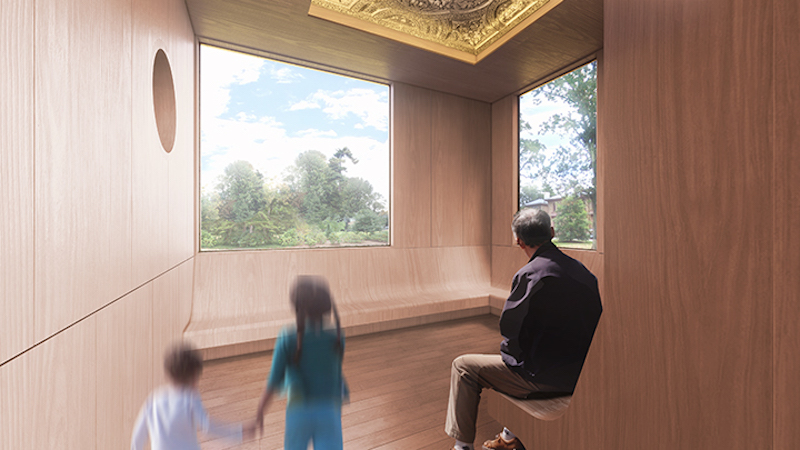
A singular “lens” moment at the complex’s northeast corner creates an intimate viewing and reading room, affords views onto the campus, and shapes a display opportunity for unique works from the collections. Image: Adjaye Associates
Each of the museum’s seven pavilions will include intimate spaces made from bronze and glass. All of the galleries will be on the second floor, a move that’s intended to smudge the lines that traditionally demarcate art by geography and historical period.
A CAMPUS WITHING A CAMPUS, THE ART MUSEUM WILL BE A DYNAMIC LEARNING CENTER
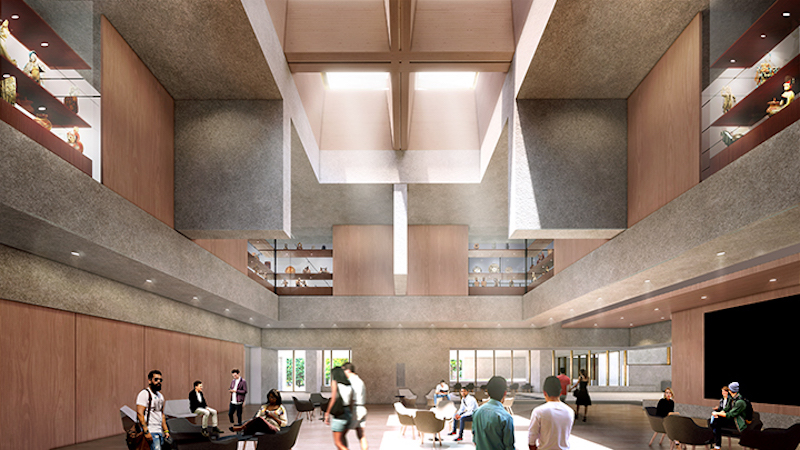
The double-height Grand Hall sits at the heart of the Museum complex and will function as a lecture hall and performance space that will host many of the Museum’s larger events. Image: Adjaye Associates
The design also includes outdoor terraces and spaces for performance and events that can accommodate anywhere from 200 to 2,000 people. These spaces include a hall for lectures, performances, and events; classrooms, two labs and a rooftop café. The design also shapes a new home for the University’s Department of Art & Archaeology, while retaining Marquand Library. Together, the three units would create a campus within a campus, and will continue to function as a dynamic center for research and teaching.
“I want the building to feel that it’s not just a hall of sacred objects but as … a common hall, so students can just go there if they feel like it and want to work close to those objects,” says Adjaye, whose firm was selected for this project in 2018. “If they have a compelling urge to see an incredible print or a sculpture or a delicate ceramic or bronze piece, it becomes a resource.”
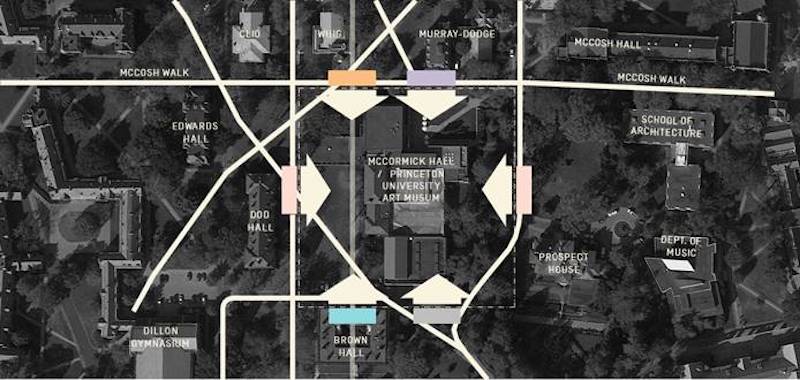
The new museum will be built on the site of the older building, and be home to the university's Art & Archeology department. Image; Princeton University Art Museum
Steward, the museum’s director, told the Art Newspaper that 98% of the funds for the construction have been raised. He declined to disclose the construction cost.
Adjaye Associates has several prominent museum projects under its belt. It was one of several architect firms involved in the National Museum of African American History and Culture in Washington DC. The firm also designed the Studio Museum that’s under construction in Harlem in New York, the Museum of Contemporary Art in Denver, and the Ruby City art center in San Antonio.
Adjaye also served as a visiting professor at Princeton’s School of Architecture from 2008 to 2010.
Related Stories
Museums | Mar 25, 2024
Chrysler Museum of Art’s newly expanded Perry Glass Studio will display the art of glassmaking
In Norfolk, Va., the Chrysler Museum of Art’s Perry Glass Studio, an educational facility for glassmaking, will open a new addition in May. That will be followed by a renovation of the existing building scheduled for completion in December.
Museums | Mar 11, 2024
Nebraska’s Joslyn Art Museum to reopen this summer with new Snøhetta-designed pavilion
In Omaha, Neb., the Joslyn Art Museum, which displays art from ancient times to the present, has announced it will reopen on September 10, following the completion of its new 42,000-sf Rhonda & Howard Hawks Pavilion. Designed in collaboration with Snøhetta and Alley Poyner Macchietto Architecture, the Hawks Pavilion is part of a museum overhaul that will expand the gallery space by more than 40%.
Products and Materials | Feb 29, 2024
Top building products for February 2024
BD+C Editors break down February's top 15 building products, from custom-engineered glass bridges to washroom accessories.
Giants 400 | Feb 8, 2024
Top 40 Museum Construction Firms for 2023
Turner Construction, Clark Group, Bancroft Construction, STO Building Group, and Alberici-Flintco top BD+C's ranking of the nation's largest museum and gallery general contractors and construction management (CM) firms for 2023, as reported in Building Design+Construction's 2023 Giants 400 Report.
Giants 400 | Feb 8, 2024
Top 40 Museum Engineering Firms for 2023
Arup, KPFF Consulting Engineers, Alfa Tech Consulting Engineers, Kohler Ronan, and Thornton Tomasetti top BD+C's ranking of the nation's largest museum and gallery engineering and engineering/architecture (EA) firms for 2023, as reported in Building Design+Construction's 2023 Giants 400 Report.
Giants 400 | Feb 8, 2024
Top 70 Museum Architecture Firms for 2023
SmithGroup, Gensler, Ayers Saint Gross, Quinn Evans, HGA, and Cooper Robertson head BD+C's ranking of the nation's largest museum and gallery architecture and architecture/engineering (AE) firms for 2023, as reported in Building Design+Construction's 2023 Giants 400 Report.
Museums | Jan 30, 2024
Meier Partners' South Korean museum seeks to create a harmonious relationship between art and nature
For the design of the newly completed Sorol Art Museum in Gangneung, South Korea, Meier Partners drew from Korean Confucianism to achieve a simplicity of form, material, and composition and a harmonious relationship with nature. The museum is scheduled to open on February 14. It is the firm’s first completed project since restructuring as Meier Partners.
Sponsored | BD+C University Course | Jan 17, 2024
Waterproofing deep foundations for new construction
This continuing education course, by Walter P Moore's Amos Chan, P.E., BECxP, CxA+BE, covers design considerations for below-grade waterproofing for new construction, the types of below-grade systems available, and specific concerns associated with waterproofing deep foundations.
Museums | Jan 8, 2024
Achieving an ideal visitor experience with the ADROIT approach
Alan Reed, FAIA, LEED AP, shares his strategy for crafting logical, significant visitor experiences: The ADROIT approach.
Cultural Facilities | Nov 21, 2023
Arizona’s Water Education Center will teach visitors about water conservation and reuse strategies
Phoenix-based architecture firm Jones Studio will design the Water Education Center for Central Arizona Project (CAP)—a 336-mile aqueduct system that delivers Colorado River water to almost 6 million people, more than 80% of the state’s population. The Center will allow the public to explore CAP’s history, operations, and impact on Arizona.


